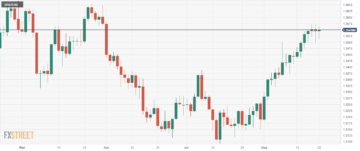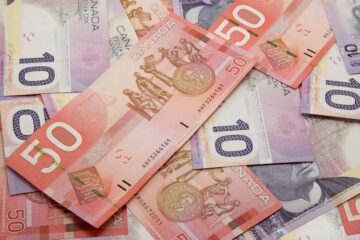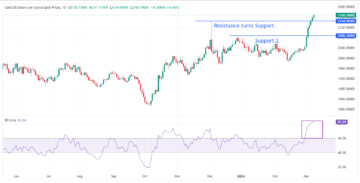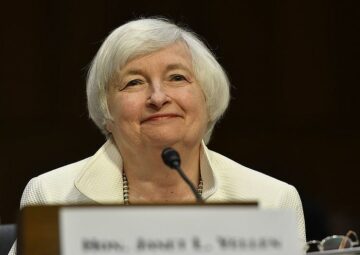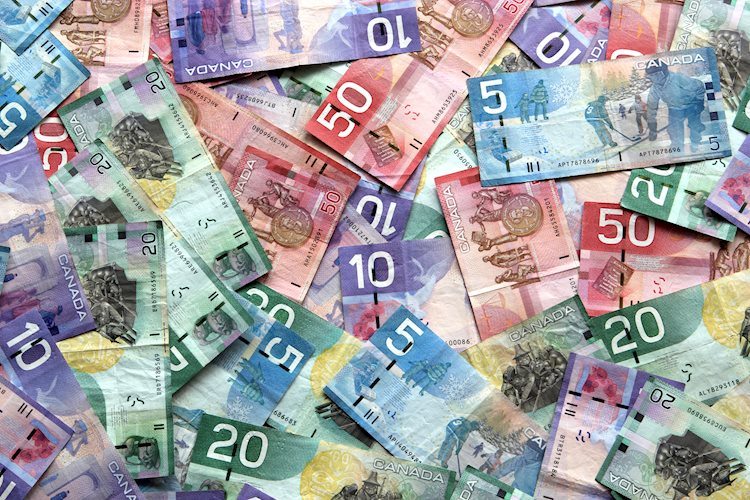
- The Canadian Dollar ended the trading week flat against the US Dollar.
- A Retail Sales beat sees little positive momentum for the Loonie as markets remain USD-focused.
- Steady Crude Oil prices aren’t hurting the CAD, but aren’t helping it either.
The Canadian Dollar (CAD) is seeing some minor lift on Friday, but selling pressure remains and intraday action is steadily pushing the USD/CAD back to its opening bids.
Canada Retail Sales beat expectations but still came in soft nonetheless and the 1.3700 price point remains too attractive a level for US Dollar (USD) bidders to abandon.
Daily Digest Market Movers: Canadian Dollar cycling this week’s popular price level as markets follow USD flows
- Canada Retail Sales beat forecasts, but still flubbed the previous printing.
- August’s CAD Retail Sales declined 0.1%, beating the forecast -0.3%.
- Despite the forecast beat, data is still soft, coming in below previous as consumer spending weakens.
- July’s data was revised higher from 0.3% to 0.4%, widening the data gap after the fact.
- Thursday’s outing from Federal Reserve (Fed) Chairman Jerome Powell continues to wriggle through markets as investors remain leery of the Fed’s dot plot.
- Market participants fearing a higher, longer interest rate cycle from the Fed are currently setting themselves up for disappointment.
- Fed officials continue to speak up their willingness to keep rates high.
- The October US Preliminary Purchasing Manager Index (PMI) next Tuesday will be the next data to hit the USD/CAD pair.
- Forex Today: A busy week ahead, between data and geopolitics
Technical Analysis: USD/CAD refusing to move too far from 1.3700 as Canadian Dollar takes two steps forward and one step back
The USD/CAD opened up Friday’s trading near 1.3716, dipping to a daily low of 1.3670 as the Loonie gains inches rather than miles on the Greenback, but the pair continues to see play close to the 1.3700 handle, closing out the Friday trading session flat at 1.3715.
Daily candlesticks see the USD/CAD trading into near-term highs as a constraining market stance weighs on the pair. Long-term resistance comes from a descending trendline from early 2020’s panic highs of 1.4650, while near-term chart action has the 50-day Simple Moving Average (SMA) rising to provide technical support from 1.3575.
A firm break higher leaves the pair open to make a challenge of 1.3800 near March’s swing highs, while the downside will have to tangle with the 200-day SMA before revisiting lows near 1.3400 from September.
Canadian Dollar FAQs
The key factors driving the Canadian Dollar (CAD) are the level of interest rates set by the Bank of Canada (BoC), the price of Oil, Canada’s largest export, the health of its economy, inflation and the Trade Balance, which is the difference between the value of Canada’s exports versus its imports. Other factors include market sentiment – whether investors are taking on more risky assets (risk-on) or seeking safe-havens (risk-off) – with risk-on being CAD-positive. As its largest trading partner, the health of the US economy is also a key factor influencing the Canadian Dollar.
The Bank of Canada (BoC) has a significant influence on the Canadian Dollar by setting the level of interest rates that banks can lend to one another. This influences the level of interest rates for everyone. The main goal of the BoC is to maintain inflation at 1-3% by adjusting interest rates up or down. Relatively higher interest rates tend to be positive for the CAD. The Bank of Canada can also use quantitative easing and tightening to influence credit conditions, with the former CAD-negative and the latter CAD-positive.
The price of Oil is a key factor impacting the value of the Canadian Dollar. Petroleum is Canada’s biggest export, so Oil price tends to have an immediate impact on the CAD value. Generally, if Oil price rises CAD also goes up, as aggregate demand for the currency increases. The opposite is the case if the price of Oil falls. Higher Oil prices also tend to result in a greater likelihood of a positive Trade Balance, which is also supportive of the CAD.
While inflation had always traditionally been thought of as a negative factor for a currency since it lowers the value of money, the opposite has actually been the case in modern times with the relaxation of cross-border capital controls. Higher inflation tends to lead central banks to put up interest rates which attracts more capital inflows from global investors seeking a lucrative place to keep their money. This increases demand for the local currency, which in Canada’s case is the Canadian Dollar.
Macroeconomic data releases gauge the health of the economy and can have an impact on the Canadian Dollar. Indicators such as GDP, Manufacturing and Services PMIs, employment, and consumer sentiment surveys can all influence the direction of the CAD. A strong economy is good for the Canadian Dollar. Not only does it attract more foreign investment but it may encourage the Bank of Canada to put up interest rates, leading to a stronger currency. If economic data is weak, however, the CAD is likely to fall.
- SEO Powered Content & PR Distribution. Get Amplified Today.
- PlatoData.Network Vertical Generative Ai. Empower Yourself. Access Here.
- PlatoAiStream. Web3 Intelligence. Knowledge Amplified. Access Here.
- PlatoESG. Carbon, CleanTech, Energy, Environment, Solar, Waste Management. Access Here.
- PlatoHealth. Biotech and Clinical Trials Intelligence. Access Here.
- Source: https://www.fxstreet.com/news/canadian-dollar-struggling-to-hold-onto-gains-for-friday-202310201659
- :has
- :is
- :not
- $UP
- 1
- 31
- 32
- 36
- a
- Action
- actually
- adjusting
- After
- against
- aggregate
- ahead
- All
- also
- always
- an
- analysis
- and
- Animate
- Another
- ARE
- AS
- Assets
- At
- attract
- attractive
- Attracts
- average
- back
- Balance
- Bank
- bank of canada
- Banks
- BE
- beat
- been
- before
- being
- below
- between
- Biggest
- BoC
- Break
- busy
- but
- by
- CAD
- came
- CAN
- Canada
- Canadian
- Canadian Dollar
- capital
- capital controls
- case
- central
- Central Banks
- chairman
- challenge
- Chart
- Close
- closing
- comes
- coming
- conditions
- consumer
- consumer sentiment
- content
- continue
- continues
- controls
- credit
- cross-border
- crude
- Crude oil
- Currency
- Currently
- cycle
- daily
- data
- Demand
- difference
- Digest
- direction
- disappointment
- does
- Dollar
- DOT
- down
- downside
- driving
- Early
- easing
- Economic
- economy
- either
- employment
- encourage
- ended
- ends
- everyone
- expanded
- expectations
- export
- exports
- fact
- factor
- factors
- Fall
- Falls
- FAQ
- far
- Fed
- Federal
- federal reserve
- Firm
- flat
- follow
- For
- Forecast
- forecasts
- foreign
- foreign investment
- Former
- Forward
- Friday
- from
- Gains
- gap
- gauge
- GDP
- generally
- Global
- goal
- Goes
- good
- greater
- Greenback
- had
- handle
- Have
- Health
- helping
- High
- higher
- Highs
- Hit
- However
- HTTPS
- if
- immediate
- Impact
- impacting
- imports
- in
- inches
- include
- Increases
- index
- Indicators
- inflation
- inflows
- influence
- influencing
- interest
- INTEREST RATE
- Interest Rates
- into
- investment
- Investors
- IT
- ITS
- jerome
- jerome powell
- jpg
- Keep
- Key
- key factor
- largest
- lead
- leading
- LEND
- Level
- likelihood
- likely
- little
- local
- long-term
- longer
- Low
- Lows
- lucrative
- Main
- maintain
- make
- manager
- manufacturing
- Market
- market sentiment
- Markets
- May..
- minor
- Modern
- module
- Momentum
- money
- more
- move
- Movers
- moving
- moving average
- Near
- negative
- next
- october
- of
- officials
- Oil
- oil price
- on
- ONE
- only
- open
- opened
- opening
- opposite
- or
- Other
- out
- pair
- Panic
- participants
- partner
- Petroleum
- Place
- plato
- Plato Data Intelligence
- PlatoData
- Play
- pmi
- Point
- Popular
- positive
- Powell
- preliminary
- pressure
- previous
- price
- Prices
- printing
- provide
- purchasing
- Pushing
- put
- quantitative
- Quantitative Easing
- Rate
- Rates
- rather
- refusing
- relatively
- relaxation
- Releases
- remain
- remains
- Reserve
- Resistance
- result
- retail
- Retail Sales
- Rises
- rising
- Risky
- sales
- see
- seeing
- seeking
- sees
- Selling
- sentiment
- September
- Services
- session
- set
- setting
- significant
- Simple
- since
- SMA
- So
- Soft
- some
- speak
- Spending
- stance
- starts
- steadily
- Step
- Steps
- Steps forward
- Still
- strong
- stronger
- such
- support
- supportive
- Swing
- takes
- taking
- Technical
- technical support
- tends
- than
- that
- The
- the Fed
- their
- themselves
- this
- thought
- Through
- tightening
- times
- to
- today
- too
- trade
- Trading
- traditionally
- Tuesday
- two
- us
- US Dollar
- US economy
- USD
- USD/CAD
- use
- value
- Versus
- was
- week
- Week ahead
- weighs
- whether
- which
- while
- will
- Willingness
- with
- zephyrnet


